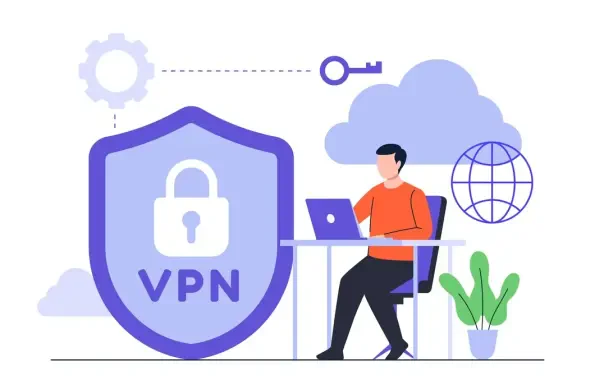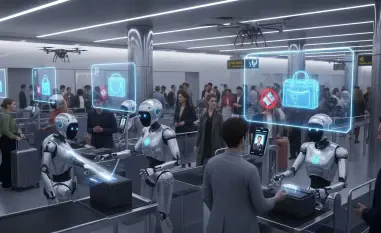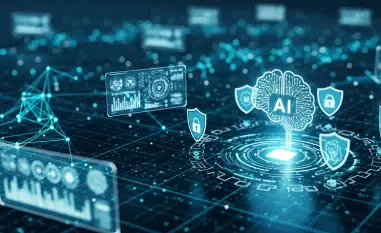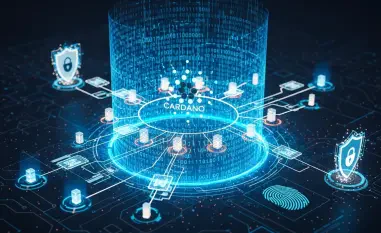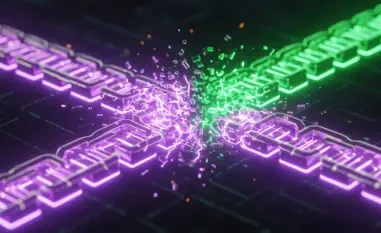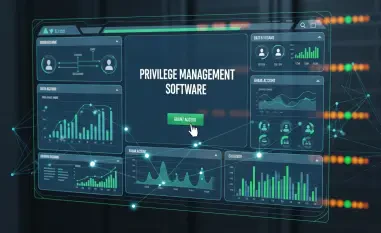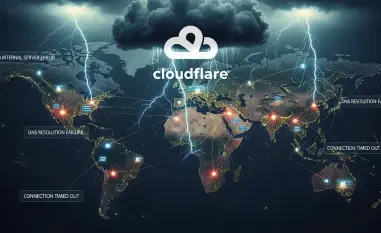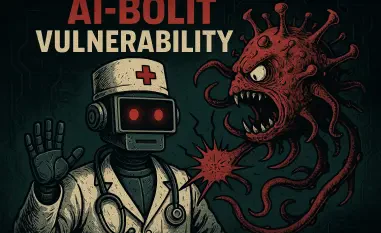Introduction to a Growing Cybersecurity Crisis
Imagine a corporate network, meticulously built to support remote work across global teams, suddenly grinding to a halt as critical systems are encrypted in under an hour. This is the harsh reality for many organizations targeted by Akira ransomware, a dangerous cyberthreat exploiting vulnerabilities in SonicWall VPNs with alarming speed. As remote access technologies become indispensable in today’s interconnected business landscape, the surge in such attacks highlights a pressing challenge for industries reliant on secure virtual connections. The rapid evolution of ransomware tactics has placed cybersecurity at the forefront of corporate priorities, urging a deeper examination of how these threats operate and what can be done to counter them.
The current state of the cybersecurity industry reveals a battlefield where defenders are constantly racing to keep pace with innovative attackers. Reports from leading research entities indicate a significant uptick in ransomware campaigns targeting VPN solutions, with SonicWall emerging as a primary entry point for groups like Akira. This trend not only threatens data integrity but also disrupts operational continuity, affecting sectors from finance to healthcare that depend heavily on secure remote access. Understanding the mechanisms behind these swift incursions is crucial for building resilient defenses against an ever-adapting enemy.
Understanding the Akira Ransomware Threat Landscape
Akira ransomware has emerged as a dominant force in the cybercriminal underworld, rapidly gaining notoriety for its targeted attacks on corporate environments. This group has honed its focus on exploiting weaknesses in remote access tools, particularly VPNs, to infiltrate networks with devastating efficiency. Their operations have impacted a wide range of industries, often leaving organizations scrambling to recover from data breaches and system lockdowns while financial and reputational damages mount.
The significance of Akira’s campaigns lies in their ability to disrupt businesses that rely on secure remote connectivity for daily operations. As more companies adopt hybrid work models, the attack surface for such threats expands, making VPNs a critical point of vulnerability. Security researchers have noted that Akira’s persistence and adaptability set it apart from other ransomware variants, positioning it as a top concern for chief information security officers globally.
Key players in the cybersecurity space, such as Arctic Wolf Labs and Microsoft Threat Intelligence, have been instrumental in analyzing and disseminating information about Akira’s tactics. Community discussions on platforms like X further amplify awareness, with experts and practitioners sharing real-time insights and warnings. This collective effort underscores the urgency of addressing ransomware as a shared challenge, requiring coordinated action across public and private sectors to mitigate its growing impact.
Mechanisms of Rapid Exploitation in SonicWall VPNs
Entry Tactics and Initial Access
Akira ransomware operators excel at identifying and exploiting weak login credentials to breach SonicWall SSL VPN accounts. Their primary method involves brute-force attacks, targeting accounts that lack multi-factor authentication, a critical safeguard often overlooked by organizations. This initial access phase is executed with precision, allowing attackers to bypass basic security measures and gain a foothold within the network almost undetected.
Once inside, the speed of Akira’s operations becomes evident through their “smash and grab” approach. Systems are often encrypted within an hour of compromise, leaving little time for defenders to react. This rapid timeline is facilitated by pre-reconnaissance efforts, where attackers identify vulnerable targets in advance, ensuring a swift and efficient attack rollout that maximizes damage before security teams can intervene.
Advanced Techniques and Evasion Strategies
Beyond initial entry, Akira employs a sophisticated arsenal of tools to maintain persistence and escalate privileges within compromised networks. Utilities like AnyDesk enable remote control, while Mimikatz is used to extract credentials, allowing attackers to move laterally with ease. These tools, combined with living-off-the-land binaries, help blend malicious activities into legitimate network traffic, complicating detection efforts by security software.
Further enhancing their stealth, Akira leverages custom scripts to automate attack processes, reducing the need for manual intervention and speeding up execution. Manipulation of Windows event logs obscures their tracks, while ransomware variants resistant to standard decryption methods challenge endpoint detection and response systems. This layered approach to evasion reflects a calculated effort to outmaneuver traditional security solutions, posing a significant hurdle for defenders.
Broader Vulnerabilities in VPN Technologies
The exploitation of SonicWall VPNs by Akira ransomware points to systemic risks inherent in remote access technologies. Similar vulnerabilities have been observed in other platforms, such as Cisco VPNs, where past incidents revealed how unpatched systems become easy targets for cybercriminals. These recurring issues highlight a pervasive problem across the VPN ecosystem, where outdated software and misconfigurations create exploitable gaps.
Organizations face immense challenges in maintaining robust security postures, particularly when balancing accessibility with protection. Many firms struggle with timely updates or lack the resources to implement comprehensive safeguards, leaving them exposed to opportunistic attacks. The reliance on VPNs for remote work amplifies these risks, as any breach can cascade into widespread network compromise, disrupting business continuity on a large scale.
The financial repercussions of such vulnerabilities are staggering, with estimates from the FBI indicating that Akira has extorted over $42 million from more than 250 victims worldwide. This figure underscores the economic toll of ransomware, where direct costs of ransom payments are compounded by downtime, recovery expenses, and loss of customer trust. Addressing these broader weaknesses requires a fundamental shift in how remote access tools are secured and managed across industries.
Industry Responses and Defensive Strategies
In response to the escalating threat of Akira ransomware, cybersecurity experts advocate for a multi-pronged defense strategy. Immediate actions include patching known vulnerabilities in VPN systems and enforcing multi-factor authentication across all access points. Regular audits of VPN configurations are also recommended to identify and rectify potential weaknesses before they can be exploited by attackers.
Collaborative initiatives have shown promise in disrupting ransomware operations, with Microsoft Threat Intelligence playing a pivotal role in containing Akira’s activities through targeted interventions. Network segmentation has emerged as a vital tactic to limit lateral movement within compromised systems, reducing the scope of damage during an attack. These joint efforts between industry leaders and security vendors illustrate the power of unified action in combating sophisticated cyberthreats.
Looking beyond traditional measures, there is a growing emphasis on advanced technologies like AI-driven anomaly detection to identify suspicious behavior in real time. Regular penetration testing is also advised to proactively uncover vulnerabilities before attackers do. Staying ahead of evolving threats demands a commitment to innovation and vigilance, ensuring that defensive capabilities keep pace with the ingenuity of ransomware actors.
Future Outlook: Staying Ahead of Ransomware Evolution
The ongoing battle between cybercriminals and defenders resembles a relentless cat-and-mouse game, with groups like Akira continuously adapting their tactics to exploit new weaknesses. Their ability to innovate at a rapid pace challenges organizations to rethink static security models, pushing the adoption of dynamic, threat-responsive frameworks. This constant evolution signals that ransomware will remain a persistent menace in the cybersecurity landscape.
Emerging technologies offer hope for bolstering defenses, with proactive threat hunting gaining traction as a means to identify potential attacks before they materialize. Enhanced collaboration across sectors, including sharing threat intelligence in real time, is poised to strengthen collective resilience. These strategies aim to shift the balance toward prevention rather than reaction, addressing the root causes of vulnerabilities.
Supply-chain risks add another layer of complexity, as interconnected systems create cascading points of failure that attackers can exploit. Maintaining vigilance in this dynamic environment requires organizations to prioritize security at every level, from vendor partnerships to internal policies. The path forward lies in fostering a culture of continuous improvement and adaptability to counter the sophisticated threats of tomorrow.
Reflecting on Findings and Next Steps
Looking back, the exploration of Akira ransomware’s exploitation of SonicWall VPNs revealed the devastating speed and stealth with which these attacks unfold. The financial impact, coupled with operational disruptions, paints a grim picture of the consequences for unprepared organizations. Discussions around systemic vulnerabilities in VPN technologies underscore the urgent need for comprehensive security overhauls across industries.
Moving forward, actionable steps emerge as a beacon for affected entities, with a clear call to invest in robust security practices such as mandatory multi-factor authentication and routine system updates. Exploring partnerships with cybersecurity firms for real-time threat intelligence becomes a recommended avenue to enhance preparedness. These measures aim to fortify defenses against the relentless innovation of ransomware groups.
Beyond immediate tactics, the broader consideration is the cultivation of a proactive mindset, encouraging businesses to anticipate rather than merely respond to cyberthreats. Integrating cutting-edge solutions like machine learning for predictive analytics offers a promising frontier to stay ahead of attackers. Ultimately, the journey to secure corporate networks against entities like Akira demands sustained commitment and cross-industry collaboration to build a safer digital ecosystem.
